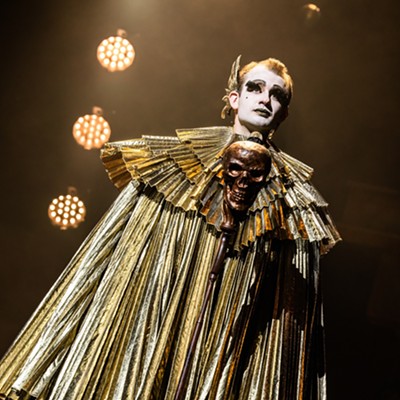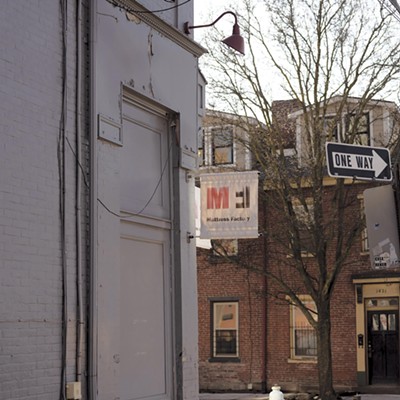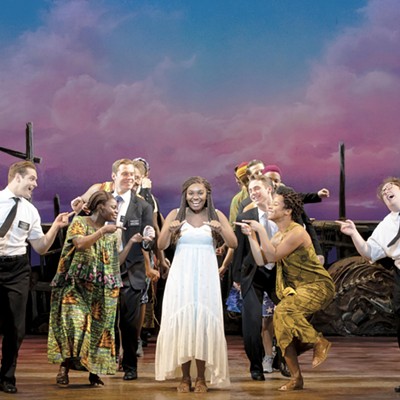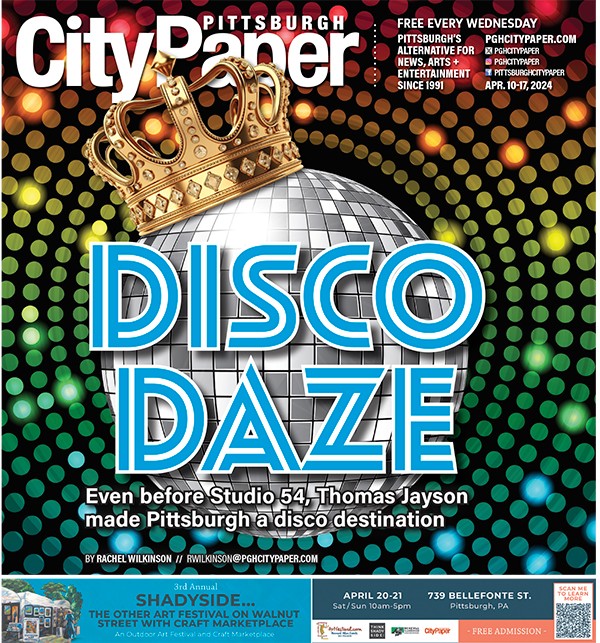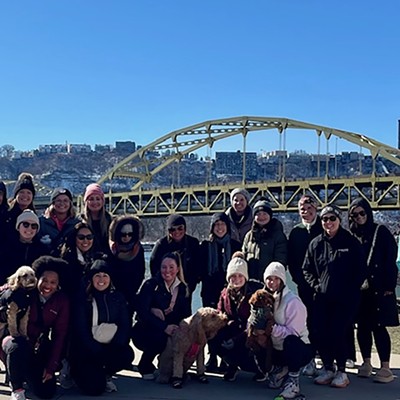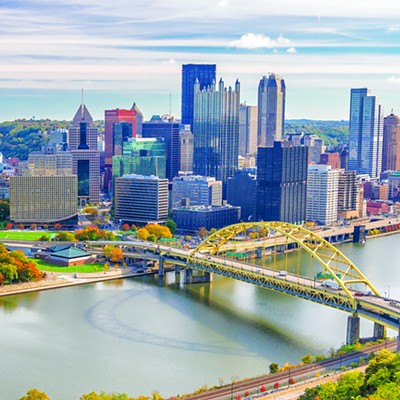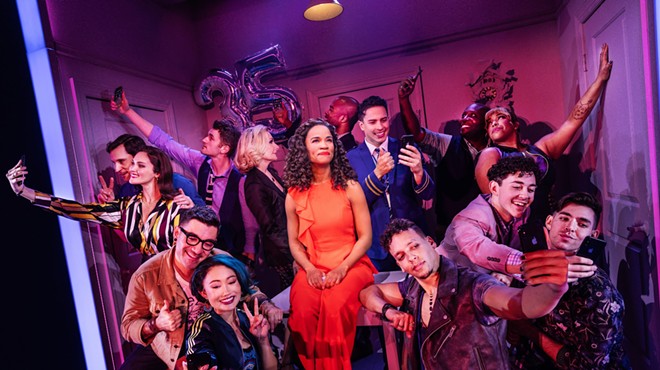At the Mattress Factory, artists from Northern Ireland explore oppression and injustice
Group show of installation works impresses
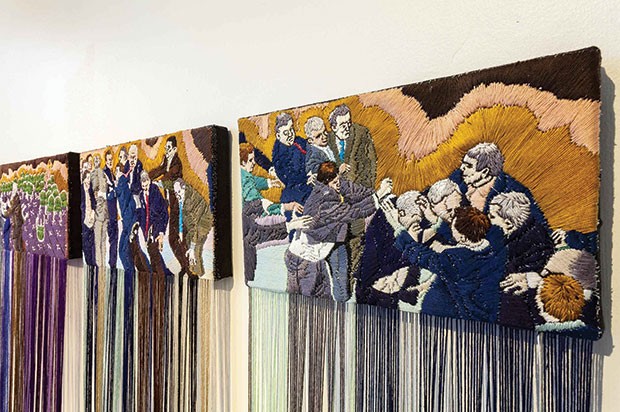
Ursula Burke’s “Embroidery Frieze (The Politicians)”
SO IT IS
continues through Aug. 6. The Mattress Factory, 1414 Monterey St., North Side. 412-231-3169 or mattress.org
Double consciousness, multiculturalism, intersectionality. Different terms, from different eras, all designed to address the fact that the identities of people in minority groups are complicated by the ways they are viewed, oppressed and discriminated against by the dominant culture. The current rise of nationalism brings with it a kind of tribalism that pits groups against one another in particularly disturbing ways.
There is evidence that people see inequality only as it relates to their own particular circumstances. Despite the advantages they have had, they focus on their own struggles. To be sure, we all have struggles, but some people face insurmountable disadvantages based on things like ethnicity, religion or gender. Our own nation was founded by colonists escaping religious persecution. But even they, in turn, persecuted others. The savagery that ensued over the course of our history — genocide, slavery, indentured servitude, worker exploitation, racial inequality — is difficult to reconcile with the relative civility that we have actually achieved in this fragile democracy.
A fragile peace also exists in Northern Ireland today, where for decades the oppression of Catholics meant that civil rights and the freedom to practice one’s own religion became important components of the fight against imperialism. As part of a commemoration of the 1916 Easter Uprising, the artist Rita Duffy created a Souvenir Shop in Dublin last year. And for the exhibition so it is, curated by John Carson at the Mattress Factory’s building at 1414 Monterey St., Duffy has assembled a more specifically American version.
The “shop” sits at the entrance to the exhibition, which includes work by seven artists from Northern Ireland. It functions both as an installation and a sort of general store where you can purchase the items on display. Duffy transforms the stuff of everyday life, such as mirrors, handkerchiefs, candy, seeds and dolls, into statements about oppression, inequality, racism and violence. There are dishes decorated with images of guns, delicate hankies imprinted with portraits of Sojourner Truth and Emma Goldman, candy jars labeled “Mother Ireland’s Mixed Martyrs,” jars labeled “Strange Fruit,” Standing Rock water bottles and I Have a Dream pillows.
Duffy offers satire as well as tributes to our heroes and martyrs. A display case contains small portraits, one of which is of Emmett Till. It is particularly compelling in light of the recent controversy surrounding Dana Schutz’s painting in the 2017 Whitney Biennial that is based on an image of Till in an open casket. The controversy brought heated discussion about who gets to speak for whom and how best to show empathy for the suffering of others. Duffy’s installation reminds us that we all need to bear witness, acknowledge each other’s sacrifices and find unity in our struggles.
That shared sense of pain, suffering and loss is also present in Willie Doherty’s video “No Return.” Filmed in Braddock, it offers a bleak vision of a future ravaged by toxic pollutants. The dead zone represented here is a study in grays and reminiscent of The Zone in Andrei Tarkovsky’s film Stalker. The narrator in Doherty’s piece is at once witness and victim. He himself succumbs to the “perpetual twilight,” blurring and dissolving into a landscape of traces, shadows and memories.
Each of the other works in the exhibition deals in some way with the fraught nature of wars and conflicts and the vulnerabilities of society and nationhood. Who wins, who loses? Who gets victimized or sacrificed? Who’s allowed in and who is left out? Locky Morris presents photographs of walls, one graffitied and one breached by fire, as a reminder that borders are not impervious. Ursula Burke’s Baroque-inspired embroideries reflect the fragility of governments, and her classically inspired marbles speak to the cruel consequences of empire. “Further Progress (Champagne and Argonne),” by Philip Napier, uses photographs of sites in France that commemorate the 28th Infantry Division’s Operations in World War I. His pieces, like Paul Seawright’s photographs, reference the sacrifices that soldiers make for their home countries and the great personal costs required for nationhood.
While not directly about The Troubles in Northern Ireland, the work included in this exhibition is clearly informed by it. But not all of it is bleak. The lighthearted “Dionysos,” by John Kindness, a “deteriorating” fresco that depicts a small parade of figures made from images of meats and vegetables, reminds us that one of the truest expressions of identity is what and how we eat. Nations may come and go, but hunger is universal. Sharing food is one way to find common ground.
There is evidence that people see inequality only as it relates to their own particular circumstances. Despite the advantages they have had, they focus on their own struggles. To be sure, we all have struggles, but some people face insurmountable disadvantages based on things like ethnicity, religion or gender. Our own nation was founded by colonists escaping religious persecution. But even they, in turn, persecuted others. The savagery that ensued over the course of our history — genocide, slavery, indentured servitude, worker exploitation, racial inequality — is difficult to reconcile with the relative civility that we have actually achieved in this fragile democracy.
A fragile peace also exists in Northern Ireland today, where for decades the oppression of Catholics meant that civil rights and the freedom to practice one’s own religion became important components of the fight against imperialism. As part of a commemoration of the 1916 Easter Uprising, the artist Rita Duffy created a Souvenir Shop in Dublin last year. And for the exhibition so it is, curated by John Carson at the Mattress Factory’s building at 1414 Monterey St., Duffy has assembled a more specifically American version.
The “shop” sits at the entrance to the exhibition, which includes work by seven artists from Northern Ireland. It functions both as an installation and a sort of general store where you can purchase the items on display. Duffy transforms the stuff of everyday life, such as mirrors, handkerchiefs, candy, seeds and dolls, into statements about oppression, inequality, racism and violence. There are dishes decorated with images of guns, delicate hankies imprinted with portraits of Sojourner Truth and Emma Goldman, candy jars labeled “Mother Ireland’s Mixed Martyrs,” jars labeled “Strange Fruit,” Standing Rock water bottles and I Have a Dream pillows.
Duffy offers satire as well as tributes to our heroes and martyrs. A display case contains small portraits, one of which is of Emmett Till. It is particularly compelling in light of the recent controversy surrounding Dana Schutz’s painting in the 2017 Whitney Biennial that is based on an image of Till in an open casket. The controversy brought heated discussion about who gets to speak for whom and how best to show empathy for the suffering of others. Duffy’s installation reminds us that we all need to bear witness, acknowledge each other’s sacrifices and find unity in our struggles.
That shared sense of pain, suffering and loss is also present in Willie Doherty’s video “No Return.” Filmed in Braddock, it offers a bleak vision of a future ravaged by toxic pollutants. The dead zone represented here is a study in grays and reminiscent of The Zone in Andrei Tarkovsky’s film Stalker. The narrator in Doherty’s piece is at once witness and victim. He himself succumbs to the “perpetual twilight,” blurring and dissolving into a landscape of traces, shadows and memories.
Each of the other works in the exhibition deals in some way with the fraught nature of wars and conflicts and the vulnerabilities of society and nationhood. Who wins, who loses? Who gets victimized or sacrificed? Who’s allowed in and who is left out? Locky Morris presents photographs of walls, one graffitied and one breached by fire, as a reminder that borders are not impervious. Ursula Burke’s Baroque-inspired embroideries reflect the fragility of governments, and her classically inspired marbles speak to the cruel consequences of empire. “Further Progress (Champagne and Argonne),” by Philip Napier, uses photographs of sites in France that commemorate the 28th Infantry Division’s Operations in World War I. His pieces, like Paul Seawright’s photographs, reference the sacrifices that soldiers make for their home countries and the great personal costs required for nationhood.
While not directly about The Troubles in Northern Ireland, the work included in this exhibition is clearly informed by it. But not all of it is bleak. The lighthearted “Dionysos,” by John Kindness, a “deteriorating” fresco that depicts a small parade of figures made from images of meats and vegetables, reminds us that one of the truest expressions of identity is what and how we eat. Nations may come and go, but hunger is universal. Sharing food is one way to find common ground.


